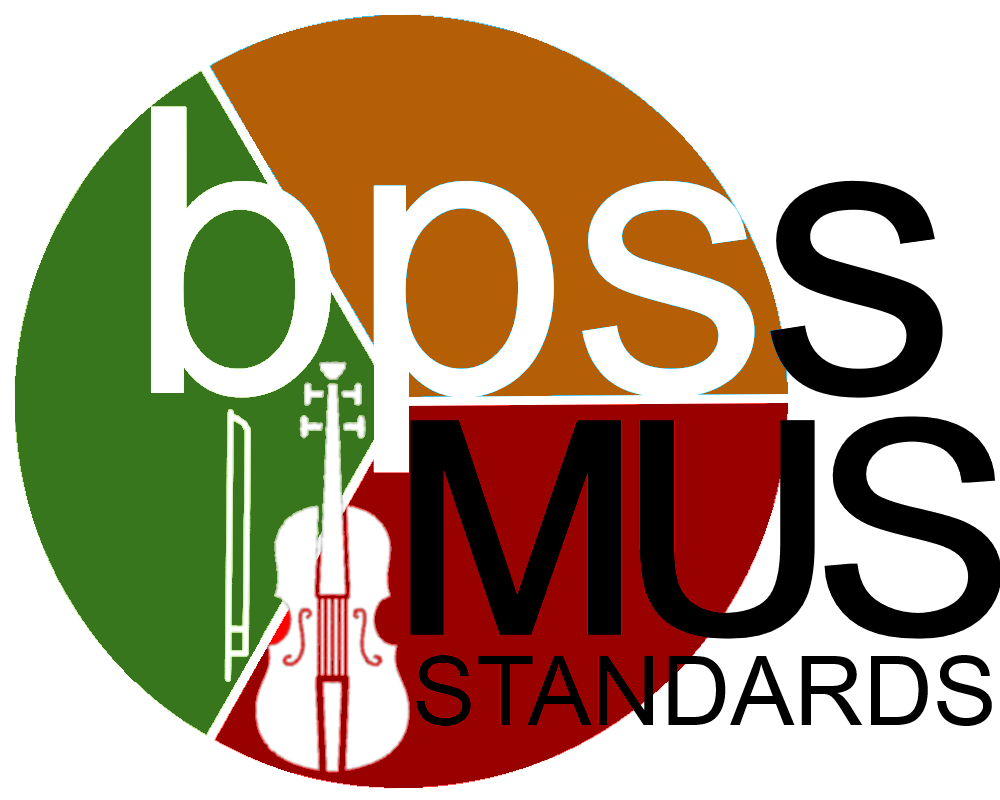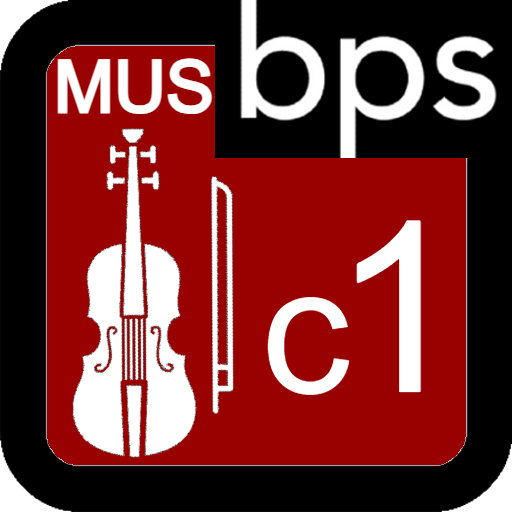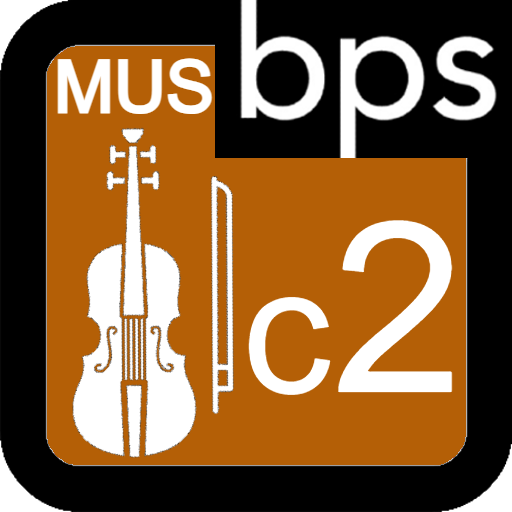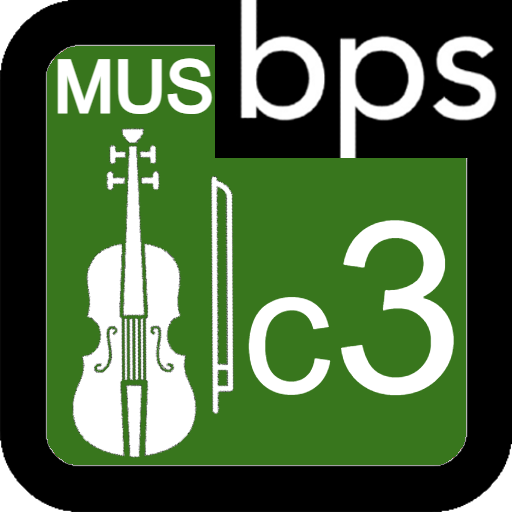MUS-09.c1  MUS-09.c1 MUS-09.c1 Category  | (c1) Category 1: Executive Skills and Knowledge
The technical skills and understanding required to physically perform on the instrument, such as body format, bowing, etc.
|
MUS-09.c1.A
Body Format | MUS-09.c1.B
Left Hand | MUS-09.c1.C
Right Hand |
|---|
| Students establish a lengthened and balanced posture; support instrument without tension, demonstrate ease of motion; format is adjusted for physiological changes due to growth; control of weight distribution, unilateral movement, bilateral movement,
in sitting and standing position. | Students perform with correct address and angle of left arm-wrist-hand-finger to instrument, that is balanced and free of tension; independence of fingers; ease of motion and control of finger weight; produces characteristic tone, with vibrato (as
appropriate); shows understanding and ability to apply fingerings, finger patterns, shifting, extensions. | Students perform with fluent bowing motion, control of variables (weight, angle, speed, and placement), in a variety of bowing techniques and articulations, with characteristic tone. |
CalculationsCategories are larger groups of related standards. The category grade is a calculation of all the related standards. Click on the standard name below each category to access the learning targets and rubrics/ proficiency scales for individual
standards within the category. |
|
MUS-09.c1.A  | 9th Grade (MUS) Targeted String Standard (c1) Category 1: Executive Skills and Knowledge (A) Body Format
Students perform with a lengthened and balanced posture; supports instrument without tension, demonstrate ease of motion; format is adjusted for physiological changes due to growth; control of weight distribution, unilateral movement, bilateral movement, in sitting and standing position.
|
 Proficiency Scale Proficiency Scale
Learning Targets
- 3.1 Continue previous criteria, monitoring and adjusting to physical characteristics of individual students.
|
|
MUS-09.c1.B  | 9th Grade (MUS) Targeted String Standard (c1) Category 1: Executive Skills and Knowledge (B) Left Hand Skills and Knowledge
Students perform with the correct placement and angle of the left arm-wrist-hand-fingers to the instrument; demonstrate position that is balanced and free of tension; play with independence of fingers, ease of motion and control of finger weight; produce characteristic tone, with vibrato (as appropriate); show understanding and ability to apply fingerings, finger patterns, shifting, extensions.
|
 Proficiency Scale Proficiency Scale
Learning Targets
- 3.1 Initial vibrato development
- 3.2 Advanced positions (fifth and higher)
- 3.3 Complex double stops (two fingered strings)
- 3.4 Advanced finger patterns–Violin/Viola (e.g., augmented and chromatic patterns)
- 3.5 Extension of vertical technique
|
|
MUS-09.c1.C  | 9th Grade (MUS) Targeted String Standard (c1) Category 1: Executive Skills and Knowledge (C) Right Hand Skills and Knowledge
Students perform with fluent bowing motion, control of variables (weight, angle, speed, and placement), in a variety of bowing techniques and articulations, with characteristic tone.
|
 Proficiency Scale Proficiency Scale
Learning Targets
- 3.1 More advanced détaché bowings
- a. Louré
- b. Détaché Lancé
- c. Portato
- d. Rapid Détaché
- e. Tremolo
- 3.2 Off-string strokes
- 3.3 Special effect bowings
- a. Flautando
- b. Sul ponticello
- c. Sul tasto
- d. Col legno
- 3.4 Chords
- 3.5 Extension of techniques related to control of bowing variables (weight, angle, speed, and placement).
|
|
MUS-09.c2  MUS-09.c2 MUS-09.c2 Category  | (c2) Category 2: Musicianship Skills and Knowledge
The elements such as understanding of rhythms, aural skills, note-reading skills, etc., that relate to musical understandings. |
MUS-09.c2.A
Tonal Aural Skills and Ear Training | MUS-09.c2.B
Rhythmic Aural Skills and Ear Training | MUS-09.c2.C
Creative Musicianship |
|---|
| Students demonstrate the following abilities: matching and manipulating pitch, playing with a sense of tonality, tonal-melodic and tonal-harmonic function (horizontal/vertical relationships/functions of tonality), ear-to-hand skills, aural and kinesthetic
awareness of pitch accuracy and intonation, including and related to improvisation. | Students perform simple and complex rhythm patterns/functions, with stray pulse/beat, correct sense of meter, metric organization and phrasing, in a variety of meters. | Students demonstrate creative musicianship skills at all stages of development, including the ability to improvise variations of rhythmic, melodic, and harmonic patterns, within the traditions and standards of a variety of genres and practices:
arrange and compose melodies and harmonies according to specific criteria and guidelines. |
MUS-09.c2.D
Music Literacy | MUS-09.c2.E
Ensemble Skills |
|---|
| Students demonstrate sequential music literacy skills (decoding and comprehension), defined as an association of sound-to-symbol, in a given musical context, which includes: predictive components (understanding of reading based on audition of written
material) and knowledge of symbols and notation related to pitch, rhythm, dynamics, tonality, clef, articulation, etc.) based on the principle that sound comes before sight. | Students perform in an ensemble, demonstrating sensitivity and the ability to adjust and maintain a uniform sense of rhythm, tempo, articulation, tone, blend, balance, and dynamics; understand conducting gestures, follow conductor and section leader,
and are able to synchronize bowings. |
CalculationsCategories are larger groups of related standards. The category grade is a calculation of all the related standards. Click on the standard name below each category to access the learning targets and rubrics/ proficiency scales for individual standards within the category. |
|
MUS-09.c2.A  | 9th Grade (MUS) Targeted String Standard (c2) Category 2: Musicianship Skills and Knowledge (A) Tonal Aural Skills and Ear Training
Students demonstrate the following abilities: matching and manipulating pitch, playing with a sense of tonality, tonal-melodic and tonal-harmonic function (horizontal/vertical relationships/functions of tonality), ear-to-hand skills, aural and kinesthetic awareness of pitch accuracy and intonation, including and related to improvisation.
|
 Proficiency Scale Proficiency Scale
Learning Targets
- 3.1 Students perform, by ear, melodic tonal patterns (patterns and melodies with chromatic alterations) in major and minor tonalities (vocally, pizzicato, and/or arco; neutral syllable, then solfege).
- 3.2 Students perform primary and secondary (ii, vi, vii) tonal patterns (vocally, pizzicato, and/or arco; neutral syllable, then solfege).
- 3.3 Students improvise (vocally, pizzicato, and/or arco; neutral syllable, then solfege) melodies and patterns, using chromatic alterations or simple modulations (e.g., major to relative/parallel minor).
- 3.4 Students improvise (vocally, pizzicato, and/or arco; neutral syllable, then solfege) simple accompaniments to melodies.
- 3.5 Students use fine tuners and/or pegs to tune strings, in fifths, to an external tonal reference.
|
|
MUS-09.c2.B  | 9th Grade (MUS) Targeted String Standard (c2) Category 2: Musicianship Skills and Knowledge (B) Rhythmic Aural Skills and Ear Training
Students perform simple and complex rhythm patterns/functions, with stray pulse/beat, correct sense of meter, metric organization and phrasing, in a variety of meters.
|
 Proficiency Scale Proficiency Scale
Learning Targets
- 3.1 Students will perform rhythm patterns in asymmetrical and unusual meters.
- 3.2 Students will perform rhythm patterns containing hemiolas.
- 3.3 Students will perform rhythm patterns containing enrhythmic notation.
- 3.4 Students will improvise rhythm patterns corresponding to Learning Tasks 3.1-3.3.
|
|
MUS-09.c2.C  | 9th Grade (MUS) Targeted String Standard (c2) Category 2: Musicianship Skills and Knowledge (C) Creative Musicianship
Students demonstrate creative musicianship skills at all stages of development, including the ability to improvise variations of rhythmic, melodic, and harmonic patterns, within the traditions and standards of a variety of genres and practices: arrange and compose melodies and harmonies according to specific criteria and guidelines.
|
 Proficiency Scale Proficiency Scale
Learning Targets
- 3.1 Rhythmic: Students layer individual rhythmic phrases to create an original group piece.
- 3.2 Tonal (Melodic and Harmonic): Students create solos using the notes of the scale as stepping stones between chord tones.
- 3.3 Textural: Students translate a visual or experiential narrative into original sounds on their instruments and add rhythmic components (rhythmic focus).
- 3.4 Composition: Students add a second instrument to their original scores.
- 3.5 Creative Leadership: Student conductors lead extemporaneous sound stories using nonverbal signals.
|
|
MUS-09.c2.D  | 9th Grade (MUS) Targeted String Standard (c2) Category 2: Musicianship Skills and Knowledge (D) Music Literacy
Students demonstrate sequential music literacy skills (decoding and comprehension), defined as an association of sound-to-symbol, in a given musical context, which includes: predictive components (understanding of reading based on audiation of written material) and knowledge of symbols and notation related to pitch, rhythm, dynamics, tonality, clef, articulation, etc.) based on the principle that sound comes before sight.
|
 Proficiency Scale Proficiency Scale
Learning Targets
- 3.1 Students correctly identify and perform chords from chord symbols (tonic, dominant, and subdominant).
- 3.2 Violists correctly identify and perform the pitches found on the treble clef staff, for the D- and A- strings, through third position.
- 3.3 Cellists correctly identify and perform the pitches found on the tenor clef staff, for the D- and A- strings, through fourth position.
- 3.4 Bassists correctly identify and perform the pitches found on the tenor clef staff, for the D- and G- strings.
- 3.5 Students correctly identify and perform double-flats and double-sharps.
- 3.6 Students correctly identify tonality (including key signature) and perform repertoire through four sharps and four flats.
- 3.7 Students correctly identify musical form: SonataAllegro.
|
|
MUS-09.c2.E  | 9th Grade (MUS) Targeted String Standard (c2) Category 2: Musicianship Skills and Knowledge (E) Ensemble Skills
Students perform in an ensemble, demonstrating sensitivity and the ability to adjust and maintain a uniform sense of rhythm, tempo, articulation, tone, blend, balance, and dynamics; understand conducting gestures, follow conductor and section leader, and are able to synchronize bowings.
|
 Proficiency Scale Proficiency Scale
Learning Targets
- 3.1 Students follow the section leader.
- 3.2 Students perform with style, articulation, and pitch including adjusting dynamics according to musical function of their part (i.e., melody, harmony, counterpoint, etc.).
- 3.3 Follow conductor’s more complex beat patterns, cues, and expressive gestures.
|
|
MUS-09.c3  MUS-09.c3 MUS-09.c3 Category  | (c3) Category 3: Artistic Skills and Knowledge
The elements that relate to the creative and expressive side of music-making, beyond mere performance, such as improvisation, performance with artistic understanding, etc.
|
MUS-09.c3.A
Expressive Element | MUS-09.c3.B
Historical and Cultural Elements | MUS-09.c3.C
Evaluation of Music and Musical Performance |
|---|
| Students employ expressive elements of music to communicate abstract thoughts, ideas, and meaning; to share the depth of the human experience; and for self-expression and understanding. | Students perform music from a wide range of genres in a culturally authentic manner, reflecting the diverse nature of people, groups, and cultures found across the world and in the U.S.; performances demonstrate an understanding of historical and cultural contexts, and reflect stylistic traditions and practice. | Students evaluate and analyze music for executive skill, musicianship, and artistic considerations; evaluate and analyze the musical performances of themselves and others based on established criteria. |
CalculationsCategories are larger groups of related standards. The category grade is a calculation of all the related standards. Click on the standard name below each category to access the learning targets and rubrics/ proficiency scales for individual
standards within the category. |
|
MUS-09.c3.A  | 9th Grade (MUS) Targeted String Standard (c3) Category 3: Artistic Skills and Knowledge (A) Expressive Elements
Students employ expressive elements of music to communicate abstract thoughts, ideas, and meaning, share the depth of the human experience, and develop expression and understanding.
|
 Proficiency Scale Proficiency Scale
Learning Targets
- 3.1 Students perform with an expanded range of dynamics, tempos, and timbre/tone color.
- 3.2 Students perform with a characteristic tone at all dynamic levels.
- 3.3 Students apply knowledge of performance practice to selected repertoire.
- 3.4 Students perform with articulation corresponding to proficient-level right-hand technical skills.
- 3.5 Students use vibrato, when appropriate, to enhance timbre and tone.
|
|
MUS-09.c3.B  | 9th Grade (MUS) Targeted String Standard (c3) Category 3: Artistic Skills and Knowledge (B) Historical and Cultural Elements
Students listen to, respond to, and perform music from a wide range of genres in a culturally authentic manner, reflecting the diverse nature of people groups and cultures across the world and in the United States, and performances demonstrate an understanding of historical and cultural contexts and reflect stylistic traditions and practice
|
 Proficiency Scale Proficiency Scale
Learning Targets
- 3.1 Students listen to selected music from diverse cultures and musical eras
- 3.2 Students analyze and classify music according to style, composer, and genre
- 3.3 Students perform music from a large repertoire of diverse styles
|
|
MUS-09.c3.C  | 9th Grade (MUS) Targeted String Standard (c3) Category 3: Artistic Skills and Knowledge (C) Evaluation of Music and Musical Performance
Students evaluate and analyze music for executive skill, musicianship, and artistic considerations and evaluate and analyze the individual and group performances based on appropriate criteria.
|
 Proficiency Scale Proficiency Scale
Learning Targets
- 3.1 Students evaluate individual and group performances using established criteria.
- 3.2 Students describe personal preference in music listening and group performance.
- 3.3 Students, with teacher assistance, establish criteria for evaluating individual and group performances based on the level of music performed.
- 3.4 Students compare and contrast performances of various interpretations of the same piece, using appropriate terminology and informed value judgements.
|
|




















